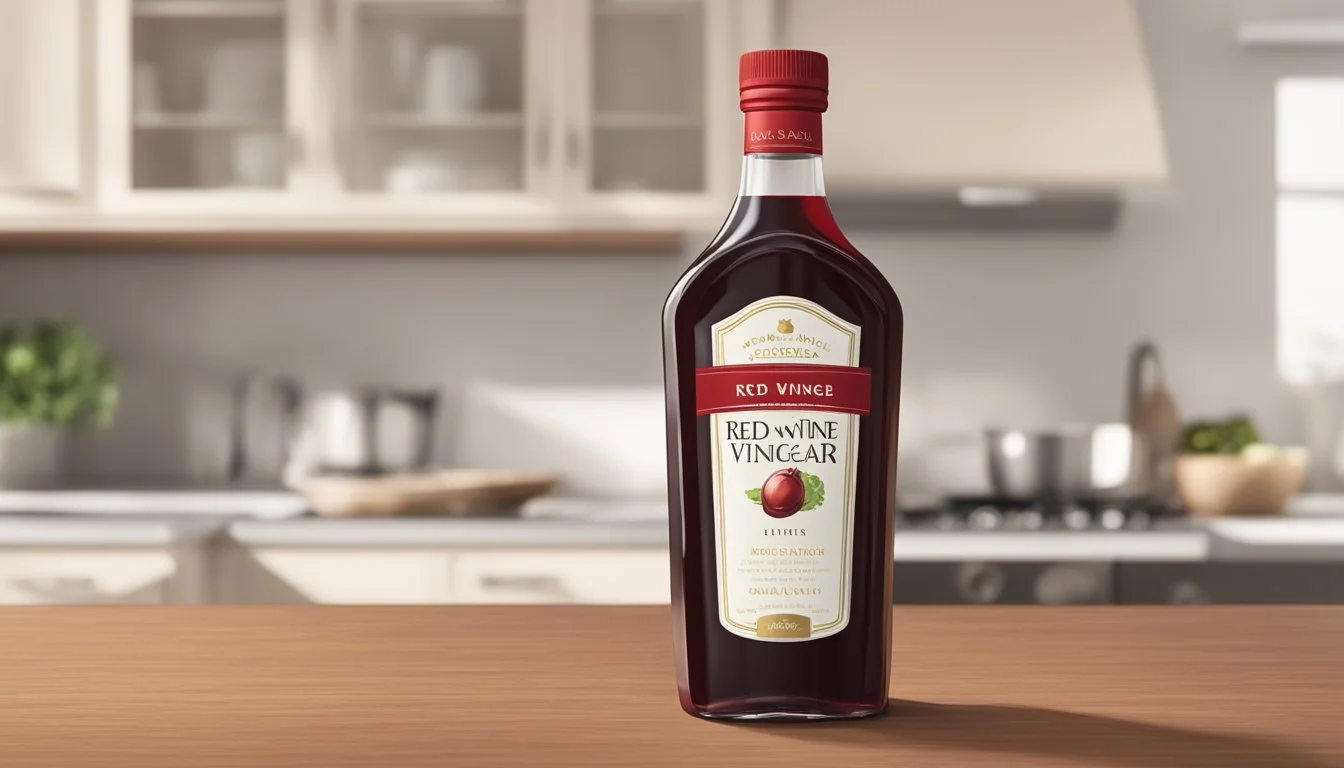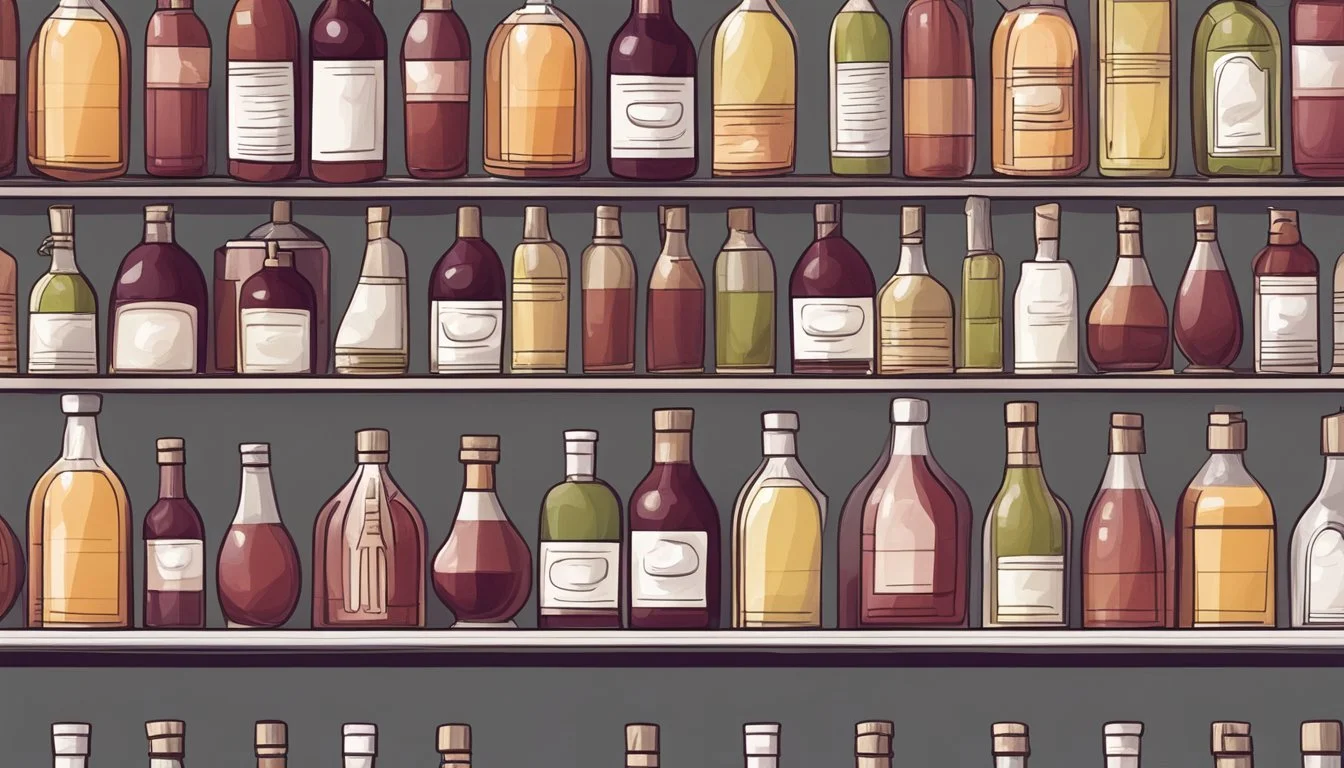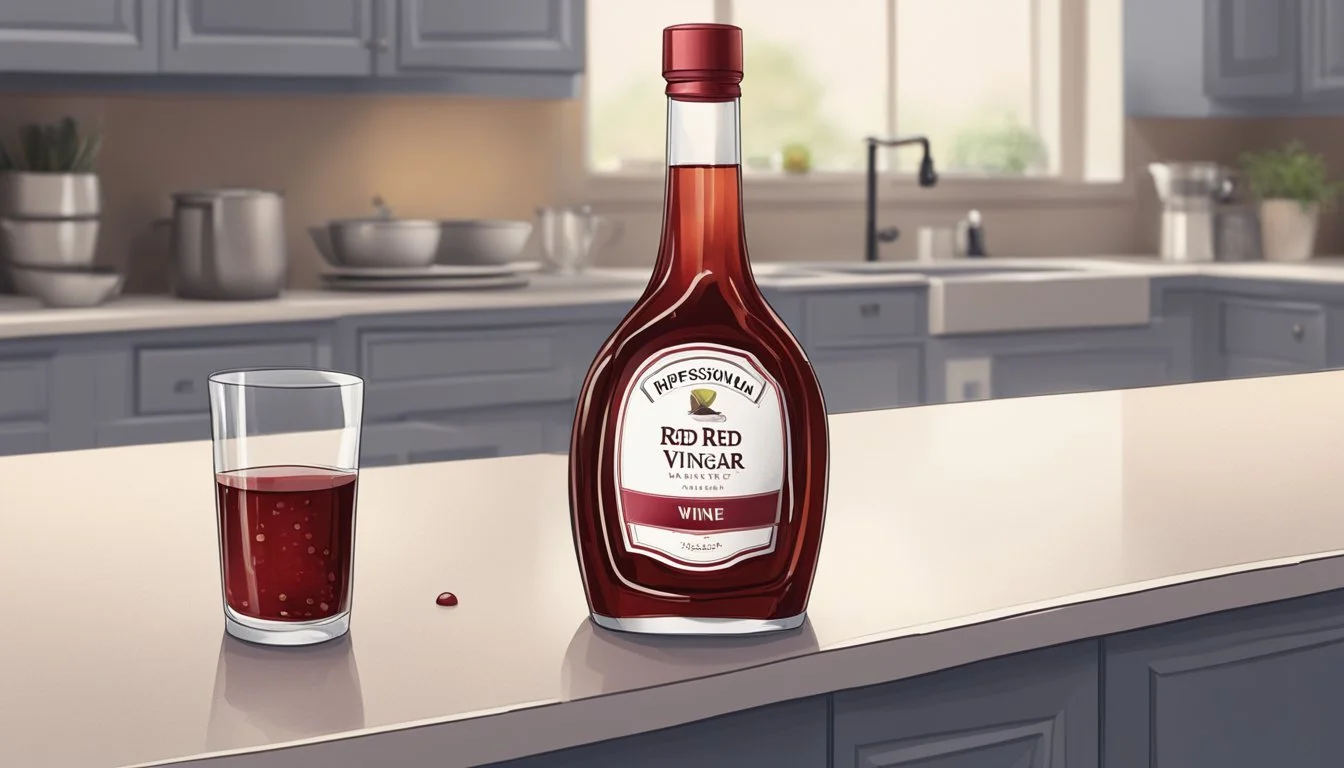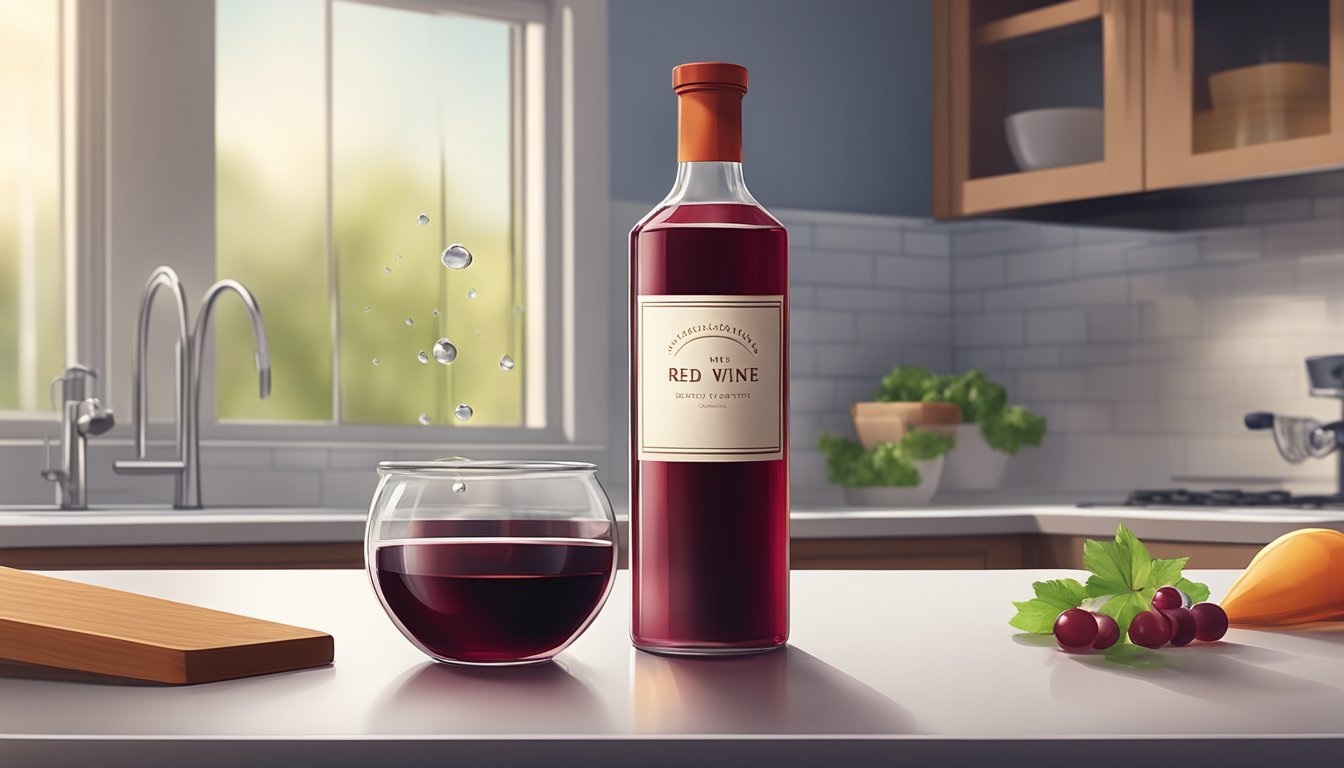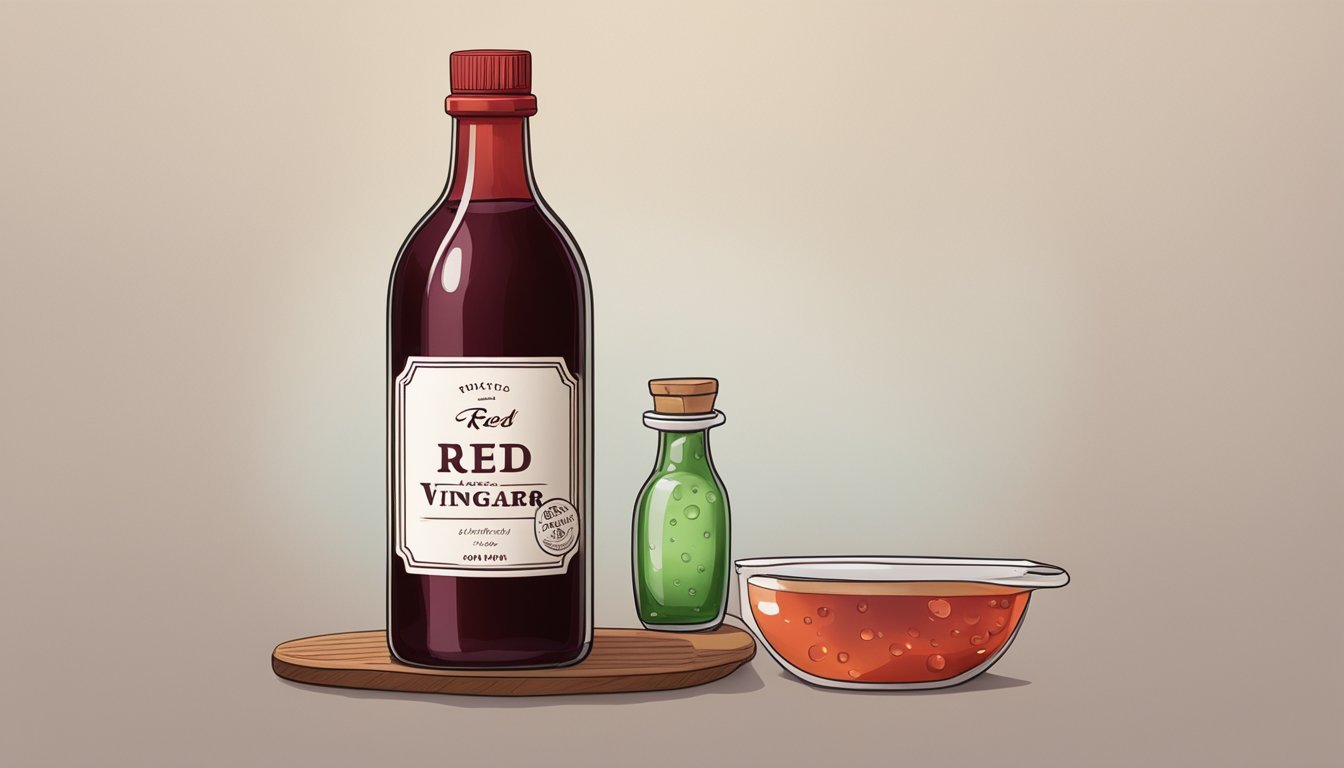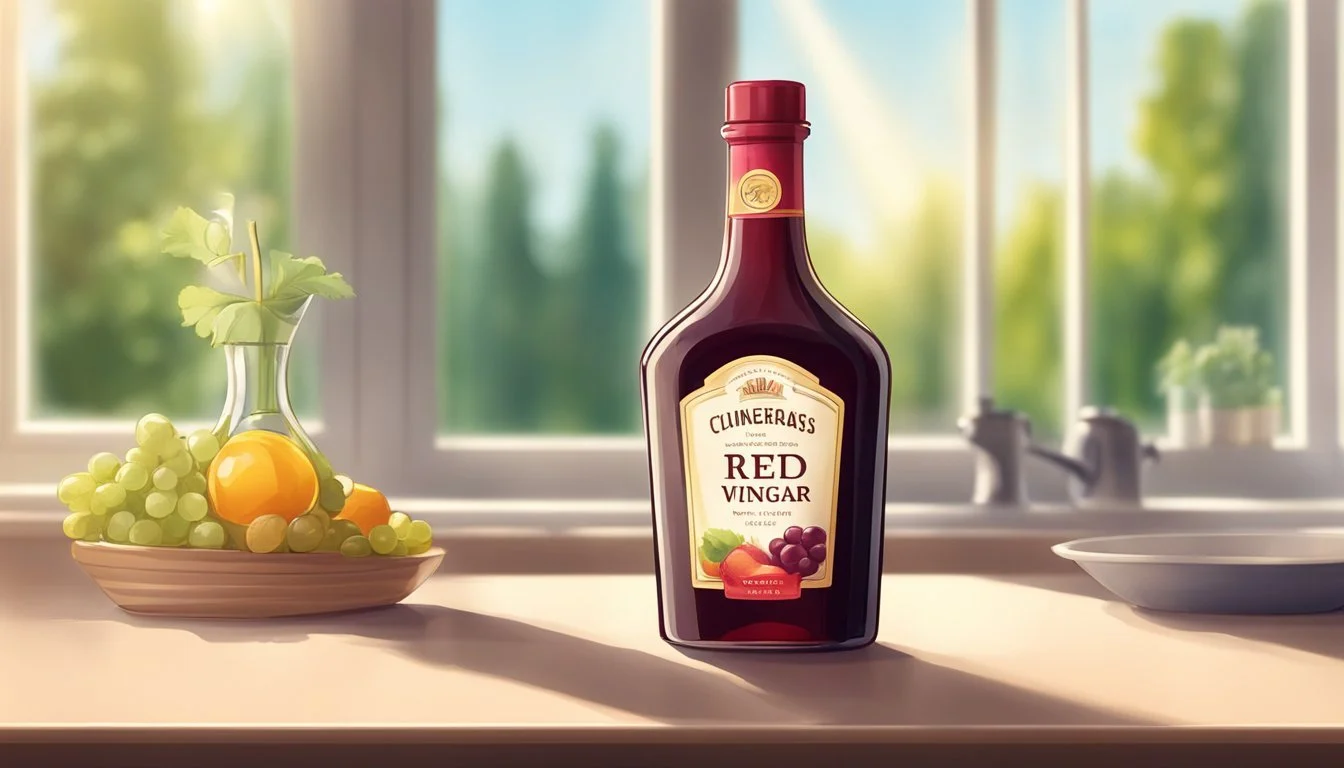Does Red Wine Vinegar Go Bad?
Understanding Shelf Life and Storage Tips
Red wine vinegar, a staple in many kitchens and salad dressings, is known for its tangy flavor and versatility in cooking. Its high acidity levels make it an inhospitable environment for harmful bacteria and fungi, significantly contributing to its shelf life. Unlike many food products that spoil, red wine vinegar remains safe to consume well beyond its labeled expiration date. The primary component responsible for its preservative qualities is acetic acid, which is not only an effective natural preservative but also lends the vinegar its distinct, piquant taste.
However, over time, even red wine vinegar can experience a decline in sensory qualities, such as flavor and aroma. While this does not indicate spoilage in the way that one might expect with perishable goods, it does affect the culinary value of the vinegar. Proper storage is key to maintaining the integrity of red wine vinegar, and when stored correctly, it can retain its best qualities for around 2 to 3 years from the purchase. After that, while it remains safe to use, a subtle degradation in its zest might be noticed, and this is usually when the discerning consumer might decide to replace it for optimal taste.
Properties of Red Wine Vinegar
Red wine vinegar, characterized by its acidic nature and flavorful diversity, is a staple in culinary practices. It's esteemed for its robust profile that enhances recipes and its storage longevity due to high acidity levels.
Acidity and Flavor Profile
Red wine vinegar is primarily valued for its acetic acid content, typically around 5 to 7 percent by volume. This acidity contributes to its distinct sour taste, which can range from mild to pungent, depending on the concentration. The pH level of red wine vinegar usually falls between 2 and 3, signifying a high acidity that can inhibit bacterial growth, thus giving red wine vinegar a long shelf life.
The flavor profile of red wine vinegar is multifaceted. It inherits the complexity from its origin, the red wine, carrying notes that can be fruity, spicy, or even slightly sweet. The flavor varies with the type of red wine used, the fermentation process, and the aging time.
Composition and Varieties
There are several factors influencing the composition of red wine vinegar. It is produced by fermenting red wine to create vinegar, a process that converts ethanol in wine to acetic acid. This fermentation is often influenced by various strains of acetic acid bacteria.
Varieties of red wine vinegar can differ greatly. Some are made from a single variety of grape, while others are a blend. The region where the grapes are grown and the specific wine-making practices also impact the final product. Here's a simple categorization of red wine vinegar types:
Single-Varietal: Made from one type of red wine grape; offers a distinct, unique taste.
Blended: A combination of different red wines; creates a more harmonized and versatile vinegar.
Each variety of red wine vinegar carries its unique composition, influenced by the grape type, origin, and methods used during the fermentation and aging processes. These factors collaboratively determine the vinegar's potency, flavor subtleties, and culinary suitability.
Shelf Life and Storage
When it comes to red wine vinegar, knowing the proper storage conditions and understanding the signs of potential spoilage are key to maintaining its quality and ensuring a long shelf life.
Optimal Storage Conditions
Red wine vinegar should be stored in a cool, dark place to preserve its quality. A pantry or a cellar is often ideal, away from any sources of heat or light. Sunlight and heat can degrade the vinegar over time. For maintaining freshness, the bottle should be tightly sealed after each use, as exposure to air can affect its flavor and acidity.
Impact of Storage on Quality
The quality of red wine vinegar is significantly influenced by how it is stored. While it generally does not need to be refrigerated, doing so can further extend its shelf life. If not properly sealed or exposed to fluctuating temperatures, the vinegar's flavor and aroma may begin to change, although it may still be safe to consume.
Expiration and Spoilage Indicators
Red wine vinegar is best used within 2 to 3 years of purchase. While it doesn't spoil in the traditional sense due to its acidic nature, it can exhibit signs of degradation such as a duller flavor or changes in aroma. There might not be a concrete expiration date, but these sensory changes can serve as indicators that the vinegar is past its optimal use period.
Effects of Environmental Factors
Environmental factors such as temperature, light, and exposure to oxygen can all impact the quality and shelf life of red wine vinegar. Understanding these effects helps to optimize storage and maintain the optimal condition of the product.
Temperature and Heat Exposure
Heat can accelerate the degradation of red wine vinegar. It thrives at a stable, cool room temperature, around 60-70°F (15-21°C), which helps preserve its flavor and quality. Extreme temperatures, particularly heat, can lead to a breakdown of its chemical components, potentially altering its taste and sharpness.
Cool: 60-70°F (15-21°C)
Avoid: Above 80°F (27°C)
Light and Oxygen Interaction
Exposure to light and oxygen can trigger oxidation and other chemical reactions in red wine vinegar. Oxidation can diminish the vinegar's acidity and flavor profile. It's advisable to store the container in a dark place and ensure it is properly sealed to limit the vinegar's interaction with light and oxygen.
Storage Recommendations:
Keep sealed: Minimize oxygen exposure
Store in dark: Protect from light sources
Usage in Culinary Practices
Red wine vinegar is a versatile ingredient, playing an integral role in various culinary applications due to its acidic and flavorful properties.
Cooking and Marinading
Red wine vinegar's acidity makes it excellent for marinades. It not only imparts a robust flavor but also helps tenderize proteins. For example, in a basic marinade, it pairs well with herbs and a touch of oil to marinate beef or chicken.
Salad Dressings and Sauces
In making salad dressings and sauces, red wine vinegar adds a zesty tang. It's the base for vinaigrettes, whisked with olive oil, mustard, salt, and pepper. It enhances the flavors in a tomato-based sauce or can brighten up a rich béarnaise.
Substitutes and Comparisons
When red wine vinegar is unavailable, suitable substitutes include balsamic vinegar, white vinegar, or apple cider vinegar, each adding a distinct flavor. White wine vinegar is a closer match and can replace red wine vinegar in equal parts in most recipes. In contrast, balsamic vinegar is sweeter, and others like apple cider vinegar bring a fruity twist.
Substitute Ratios
Substitute Ratio to Red Wine Vinegar Balsamic Vinegar 1:1, but reduce any added sweetness White Vinegar 1:1, with a milder flavor Apple Cider Vinegar 1:1, for a fruitier profile White Wine Vinegar 1:1, best for a similar profile
Each option offers a different dimension to marinades and sauces, demonstrating the flexibility and importance of acidity in cooking.
Health Implications
The health implications of red wine vinegar are multifaceted, spanning from its nutritional value to preservative qualities and potential health risks. Red wine vinegar offers health benefits, aids as a preservative due to its acidic nature, and has considerations for consumption.
Nutritional Benefits
Red wine vinegar contains several bioactive components like acetic acid and polyphenols. Acetic acid has been found to help control appetite and regulate blood sugar levels. Meanwhile, polyphenols such as resveratrol, present in red wine vinegar, may support heart health by preventing damage to blood vessels and lowering LDL cholesterol.
Usage as a Preservative
The preservative nature of red wine vinegar stems from its acetic acid content. With a typical pH between 2.5 and 5.0, red wine vinegar creates an environment that is hostile to bacteria and fungi, which can prevent food spoilage. This can be particularly beneficial in extending the shelf life of perishable items when used in marinades or salad dressings.
Potential Health Concerns
While red wine vinegar is considered safe for most, consumption in excessive amounts could potentially lead to negative effects on health, such as digestive discomfort. Those with preexisting conditions, especially those related to stomach acidity or esophageal conditions, should monitor their consumption. It’s also important to note that while red wine vinegar may share some of the health properties of red wine, it does not contain alcohol.
Visual and Sensory Changes
Monitoring color and clarity as well as smell and aroma can provide insights into the condition of red wine vinegar over time.
Color and Clarity Transformation
Red wine vinegar typically has a deep red or burgundy hue when it is fresh, with clear clarity and no signs of sediment. However, color can fade or change slightly as the vinegar ages, potentially becoming a bit lighter or browner. Changes in clarity can also occur, with older vinegar sometimes becoming a bit cloudy or developing sediment at the bottom of the bottle.
Smell and Aroma Shifts
The aroma of red wine vinegar is a robust indicator of its freshness. Initially, it should have a crisp, tart scent characteristic of acetic acid with a hint of red wine undertones. However, as it ages, the smell may become less pungent, and the vinegar could lose some intensity of its fragrance. If the vinegar develops an off-smell or the scent changes dramatically, it may be past its prime for culinary uses.
Process and Chemical Reactions
In the production and maintenance of red wine vinegar, several key processes and chemical reactions occur. These involve fermentation by acetic acid bacteria, potential spoilage through oxidation, and the presence of sedimentation that may require straining.
Fermentation and Mother of Vinegar
The transformation of red wine into red wine vinegar begins with fermentation, specifically through the introduction of a starter culture of acetic acid bacteria to the wine. The mother of vinegar is a cellulose substance that houses these bacteria and facilitates the conversion of ethanol in wine to acetic acid.
Fermentation Stages:
Ethanol from wine interacts with oxygen.
Acetic acid bacteria produce acetic acid from ethanol.
Oxidation and Spoilage
Oxidation is a natural reaction that can lead to spoilage in many food items but in the case of red wine vinegar, the high acidity prevents the growth of harmful bacteria that generally lead to food spoilage. Over time, however, repeated exposure to air can cause the vinegar to undergo chemical changes, which may not render it unsafe but could impact its flavor and aroma.
Factors Impacting Oxidation:
Frequency of bottle opening.
Exposure to air.
Sedimentation and Straining
Sedimentation refers to the natural occurrence of particles settling at the bottom of the vinegar bottle. The presence of sediment is not an indication of spoilage but rather a byproduct of the ongoing fermenting process. Consumers often strain the vinegar to remove sediment and maintain clarity.
Straining Methods:
Use a coffee filter.
Employ a fine-mesh sieve.
Maintenance and Care
Ensuring that red wine vinegar maintains its quality over time requires proper storage and handling. The longevity and freshness of red wine vinegar can be optimally preserved through adequate sealing, vigilant cleaning practices, and employing long-term preservation techniques.
Proper Sealing and Capping
To protect red wine vinegar from degradation, one must ensure the container is sealed tightly after each use. A secure cap prevents the entry of contaminants and minimizes the oxidation process. Whether stored in a pantry or refrigerated, the bottle should always be closed with the original cap.
Pantry storage: Ensure the cap is screwed on firmly.
Refrigerated storage: Close the cap tightly to maintain quality, although refrigeration is not typically required.
Cleaning and Contamination Prevention
Keeping the exterior of the vinegar bottle clean is crucial for contamination prevention. Any spillage should be wiped off immediately to prevent bacteria from growing on the outside of the bottle, which could risk contaminating the contents when opened next.
Cleaning steps:
Wipe down the bottle and cap with a clean damp cloth after use.
Ensure no residue remains that could attract pests or harbor bacteria.
Long-Term Preservation Techniques
To extend the life of red wine vinegar, one can adopt several preservation techniques. Storing the vinegar in a cool, dark place like a pantry away from direct sunlight and heat helps maintain its flavor and arrest any deterioration process.
Prefer glass bottles over plastic containers for better quality preservation.
A stable temperature and protection from drastic temperature changes contribute to the vinegar's longevity.
Additional Uses and Benefits
Red wine vinegar, an essential in many kitchens, has a broad range of applications not just limited to culinary arts, but extends to various non-culinary uses. Its acidic nature and flavor profile make it a versatile ingredient.
Culinary Alternatives
Salad Dressings and Vinaigrettes Red wine vinegar is a key component in dressings and vinaigrettes, often whisked together with ingredients like olive oil, Dijon mustard, and spices. The acidic nature of the vinegar allows it to emulsify with the fat in the olive oil, creating a stable blend that enhances salads and dishes with a tart flavor.
Marinades and Pickling For marinades, red wine vinegar can tenderize and add flavor to meats and vegetables. It is also commonly used in pickling processes, where its acetic acid content is crucial for preserving and flavoring the pickled items.
Non-Culinary Applications
Cleaning Agent Given its acetic acid content, red wine vinegar is effective in cleaning and disinfecting surfaces. It can be diluted with water to clean glass or countertops, leaving behind a streak-free shine.
Deodorizing The neutralizing properties of red wine vinegar can tackle unpleasant odors. A small bowl placed in the fridge can help to absorb and eliminate odors, maintaining a fresh environment.
Final Thoughts
Red wine vinegar boasts an impressive shelf life due to its high acidity. This characteristic ensures that red wine vinegar remains safe for consumption long after its expiration date, deterring the growth of harmful bacteria and fungi.
The quality of red wine vinegar is maintained best within a two-to-three-year window post-purchase. Following this period, there might be a slight decrease in its robust flavors and aromas, yet it doesn't render the vinegar unsafe to use. For optimal preservation, it should be stored in a cool, dark location and, if possible, refrigerated after opening to maintain its quality.
When assessing red wine vinegar's usability, individuals should rely on sensory cues. A vinegar that has developed an off odor, flavor, or appearance might have depreciated in quality, although this is rarely associated with safety concerns. A simple visual and olfactory inspection can guide whether the vinegar is adequate for culinary applications.
Storage Recommendation Pre-opening Dark, cool environment Post-opening Refrigeration recommended
Consumers should trust their judgment when deciding to use red wine vinegar that has surpassed the advised time frame. While there's no stringent expiration for safety, the gastronomic experience may be less pronounced with time.
In summary, red wine vinegar's resilience against spoilage makes it a reliable and enduring staple in kitchens, with very little risk of it 'going bad' in a hazardous sense.

